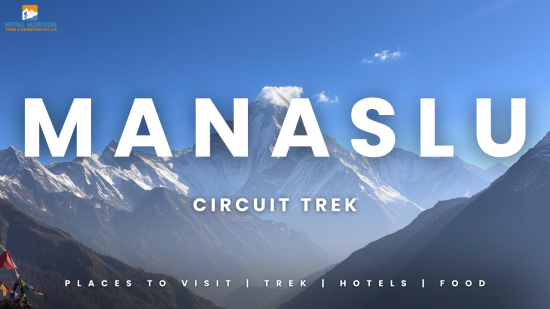Upper mustang trek a complete guide
1st February 2023
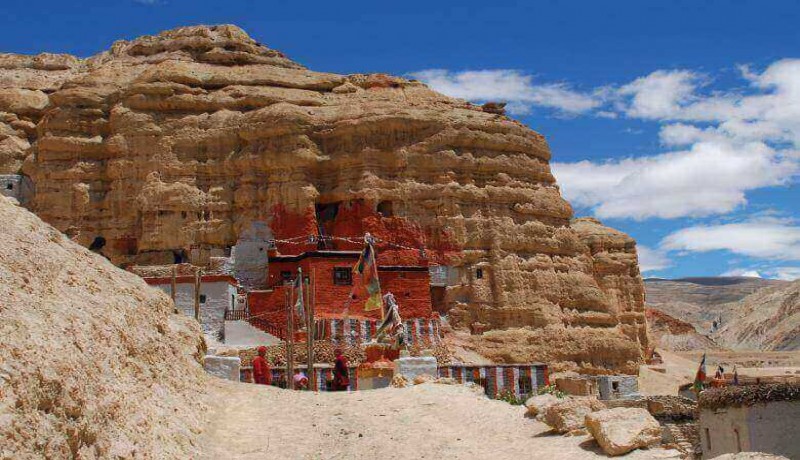
Mustang, a part of Dhaulagiri Zone, one of Nepal's 75 districts, is a landlocked country in South Asia. According to the 2001 census, Jomsom, which serves as its administrative center, has a population of 14,981 and a land area of 3,573 km2. The Tibetan plateau is reached via Mustang, which crosses the Himalayas. Located in the Himalayan area of north-central Nepal, Mustang is a secluded sub-kingdom. The Tibetan term "Mustang," which means "Plain of Aspiration," is the source of the name. The Annapurna Conservation Area, Nepal's largest protected area, covers the entire district. The population of Mustang, which is just approximately 15,000 people, is Tibetan in culture.
Mustang, a remote region of Nepal, has caves, climbs, and royals. Mustang is a former forbidden kingdom that borders China and the Tibetan plateau and is protected by some of the world's highest mountains, including the 8000-meter Annapurna and Dhaulagiri peaks. Mustang's strict travel regulations have helped Tibetan traditions there endure longer than they have in actual Tibet. To visit this location, tourists need permits. The ancient Buddhist kingdom of Lomanthang is located in Mustang. You get a comparable sense of adventure while trekking in Mustang as you would in Tibet.
Upper Mustang Trek is one of the well known trekking destinations due to its spectacular semi-arid landscape and distinct Tibetan tradition. The Upper Mustang Trek takes you to the mysterious former kingdom of Mustang in northwest Nepal's lonely, parched trans-Himalayan region. The rich history, culture, breathtaking mountain views, and dramatic landscape make this easy to moderate level hike stand out. Up until 2008, when Nepal was proclaimed a republic, the monarchs ruled over Upper Mustang for a considerable amount of time. Lower Mustang opened up to visitors in the 1970s, while Upper Mustang remained off-limits, earning it the nickname "The Forbidden Kingdom of Lo." Tourism was eventually launched there in 1992. In order to safeguard and maintain the rich Tibetan Buddhist and Thakali cultures as well as the Bon religion, Upper Mustang has been designated as a restricted area.
The five best trekking routes are reachable within and around Upper Mustang. They are linked via the most well-known route, which takes a shorter western path and a longer eastern trail. All of these paths, of course, offer stunningly desolate landscapes with lovely color layers displayed on elevated cliffs frequently encircled by caverns, valleys, and unique rock formations. Under these mountains lie rivers, saltwater, apple gardens, barley farms, special Buddhist structures, and whitewashed villages. Although there are no passes higher than 4,300 meters on the Upper Mustang walking trail, a guide is required because the trail is not clearly marked.
Highlight of upper Mustang trek
-
Experience unique, semi-arid, and arid landscape of mustang region
-
Adorable view of mountain Annapurna, Dhaulagiri, and Nilgiri, which are all over 7,000 meters high.
-
Visit Muktinath, a sacred Hindu and Buddhist pilgrimage site.
-
Tibetan culture and lifestyle
-
Cross the high Pa Pass, located at an elevation of 4,210 m.
-
Tsarang Goempa Monastery
-
Visit the Jampa Lhakhang, Tubchen, Chode, and Choprang Goempa monasteries in Lo Manthang.
Upper mustang trek itinerary
Day 01: Arrival in Kathmandu, Tribhuvan International Airport (1,300m/4,428ft)
Day 02: Kathmandu: Sightseeing and preparation for the trek
Day 03: Drive from Kathmandu to Pokhara (827m/2,689ft) – 5 – 6 hours trek
Day 04: Fly from Pokhara to Jomsom (2,700m/8,898ft) and trek to Kagbeni (2,81m/9,216ft) – 3 – 4 hours trek
Day 05: Kagbeni – Chele (3,050m/10,004ft) – 5 – 6 hours trek
Day 06: Chele – Syanbochen (3,475m/11,398ft) – 6 – 7 hours trek
Day 07: Syanbochen – Ghami (3,520m/11,546ft) – 5 – 6 hours trek
Day 08: Ghami – Tsarang (3,620m/11,873ft) – 5 – 6 hours trek
Day 09: Tsarang – Lo – Manthang (3,730m/12,234ft) – 3 – 4 hours trek
Day 10: Exploration of Lo Manthang/ Acclimatization
Day 11: Lo – Manthang – Drakmar (3,810m/12,500ft) – 6 – 7 hours trek
Day 12: Drakmar – Ghiling (3,806m/12,484ft) – 5 – 6 hours trek
Day 13: Ghiling – Chhuksang (3,050m/10,004ft) – 5 – 6 hours trek
Day 14: Chhuksang – Jomsom (2,700m/8,856ft) – 6 – 7 hours trek
Day 15: Fly from Jomsom to Pokhara
Day 16: Drive: Pokhara – Kathmandu
Day 17: Final Departure
Upper Mustang Trek difficulty
The difficulty of the upper Mustang trek will depend on the route and itinerary you choose for your trek. Although it is not an easy trek, it is less difficult than the Everest Base Camp trek. However, if you have already prepared your body with some physical training, then you can easily complete this trek with fewer difficulties.
Distance
Generally, the Upper Mustang trek takes 16–17 days. You will walk 6 to 7 hours per day on average throughout the course of these 17 days. Two to three days of rest or acclimation are frequently included during this time. For trekkers who are new to the sport, this is crucial. The lengthy duration allows you time to become familiar with the landscape, which can lead to a safe and pleasurable journey. The time might be shortened to 12–14 days for seasoned hikers and adventure seekers. Anything less could be unhealthy for you. On the 12- to 14-day Upper Mustang trek, there is an increased danger of high altitude sickness.
Weather
Spring, summer, autumn, and winter are the four seasons that Upper Mustang encounters during the year. These seasons also affect how challenging the walk is. Upper Mustang hiking is most enjoyable in the spring. During this time of year, the daytime temperature typically ranges from 12 to 16 degrees Celsius. However, the temperature may drop by up to 6-2 degrees Celsius at night. During this time of year, the Himalayas may be seen in all their splendor. Going on a hike there in the summer or the fall is simple.
However, it will be more challenging to travel in the winter. Due to the considerable snowfall, the temperature may drop by 0 to 5 degrees during the day and by -20 to -25 degrees at night.
Altitude sickness
Walking requires climbing higher than 3000 meters in the Himalayas. Trekking at a high altitude can result in acute mountain sickness, which has symptoms like headache, nausea, giddiness, vomiting, difficulty breathing, and other symptoms. Depending on your choice, this journey's pinnacle shifts. Whatever you choose, don't hike any higher than Marang La, which is at 4230 m. However, traveling at your own pace, taking the required acclimatization days, and consuming lots of water can all help you successfully accomplish your journey.
Remoteness
On the trek to the isolated location, one can experience the customs and way of life of the local people. On this trek, hikers shouldn't count on staying at renowned lodges and hotels. Basic conveniences like hot meals, clean beds in clean, shared rooms, lavatories, and other amenities are offered by the surrounding teahouses. This area, which only became accessible in 1992, is unspoiled by modern life and Western civilization. However, several amenities are being built in response to the draw of both internal and external tourists. There are certain places with fantastic WiFi, which makes phone calls simple.
Terrain
Like other treks in the Himalayas, the Upper Mustang Trek has its ups and downs. There may be a series of alternating ups and downs or, sometimes, a long, uninterrupted ascent or descent. There is also not much flat land. Because of the terrain, this hike may be challenging. But if you've been on previous adventures, you won't have to worry about the landscape. Similar oscillations may be seen on the track of the Annapurna circuit. Nevertheless, it is strongly encouraged to prepare in advance.
Upper Mustang Trek food and accommodation
Upper Mustang is a journey that is lodged in tea houses. They are typically painted white and composed of brick and mud. These tea shops are incredibly cozy and only have a few rooms. The freshly constructed, multi-story concrete tea houses in Lo Manthang can accommodate a large number of trekkers. The rooms typically include two single beds and little other furniture. It is preferable to put a sleeping bag on top for hygienic reasons even though a pillow and blankets are provided because they are not as fluffy and toasty.
Only a small percentage of tea establishments have attached facilities; the majority make use of shared restrooms. They typically feature squat seats. Bring your own pocket soap and toilet paper because not all tea shops have access to them. In the tea house, showers are similarly communal and not attached. In the Mustang region, you will pay around USD 2 for a hot shower. The majority of tea houses rely on solar heating, while some also have gas showers.
Although the food options in Upper Mustang and other trekking locations are comparable, thanks to the Tibetan Buddhist community that calls those places home, you will discover various Chinese and Tibetan delicacies along the trail. The food in the Mustang region is generally good but not extravagant like that in Kathmandu and Pokhara. Due to its dominance in the Nepali diet, "Dal Bhat," or lentil soup and rice with vegetable curry, is a traditional food served on the trek. Since it satisfies hunger, the endless supper is a favorite among hikers. You can have it for lunch or dinner for about $4. For breakfast, you can have Western foods including porridge, pancakes, eggs, jam, honey, and more. Try the cuddly Tibetan breed. You should taste the local dish called tukpa, which is Tibetan noodle soup.
Upper Mustang electricity and wifi
Major towns like Kathmandu and Pokhara, as well as touristy areas like Muktinath, have readily available electricity facilities. However, there are often power outages along the Upper Mustang Trail. Tea houses in numerous villages, including Lo Manthang, Jomsom, and Kagbeni, rely on intermittent solar electricity. Ask the owner of the tea house when they turn on the power, which is typically in the evening, so that you can charge your devices while conserving power for the remainder of the day. Carry portable solar panels, power banks, and backup camera batteries as much as you can. Additionally, to conserve battery life, keep your phone in flight mode while on the hike.
During the walk, internet connectivity is quite irregular and unpredictable. After Jomsom, it can be challenging to locate tea places with Wi-Fi because it is a rural area. Although some of the tea cafes along the road do offer internet connections, the prices are higher than $1 per hour, which is ineffective. The Wi-Fi in hotels in Muktinath is a little better, so you can share your photos on social media and stay connected to your family.
Upper Mustang has recently made significant advancements in telecommunications, with Nepal Telecom (NTC) performing particularly well in this area. Cellular service is largely accessible along the routes on clear days. Jomsom, Muktinath, and Lo-Manthang in particular have decent cell reception. NTC recently launched 4G services in the area. Upper Mustang is where Ncell, another telecommunications provider, is expanding its coverage. There are landline connections in several villages.
Upper mustang permit
Two permissions are required before beginning the Upper Mustang Trek: the Restricted Area Permit Guidelines, and the Annapurna Conservation Area Permit (ACAP). To continue the hike, you need to have all the permits. Throughout your walk, there will be a lot of checkpoints and officers checking your permit. If you lose your permission card, you can also get a new one by paying an additional fee. Without out government-registered register trekking agency and compulsory guide, this permit is not issued and you must have 2 pax in a group.
Upper Mustang Restricted Area Permit
The government of Nepal's immigration office in either Kathmandu or Pokhara issues permits for restricted area hiking through a reputable trekking agency. No one may access Upper Mustang without a permit. The area above Kagbeni hamlet is referred to as the "Upper Mustang Area"; it also houses the RAP checkpoint, where trekkers must register before and after their trek using special permits and passports.
Annapurna Conservation Area Permit (ACAP)
An ACAP permit is required to access and depart any hiking route that travels across the Annapurna Conservation Area's protected terrain. Therefore, we also need to obtain ACA permission for Upper Mustang. The Nepal Tourism Board Service Center in Damside, Pokhara, or the Nepal Tourism Board Office in Bhrikuti Mandab, Kathmandu, are where you can obtain the ACAP permit for Upper Mustang. They will offer you a form to complete after your visit to the place.
-
The cost of an ACAP permit for a solo traveler is 3000 (about $30 USD).
-
The cost of an ACAP permit is NRs 2,000 per person if you are traveling in a group.
-
The cost of ACAP permit for SAARC countries is NRs 1000.
Why is Upper Mustang a restricted area?
In accordance with Nepali government laws, locations with an open border or a connection to another country, like the trekking zone and Upper Mustang, may only be visited with a special permit. The decrease in criminal activity along international borders and enhanced border security are the causes of everything. The first persuasive argument for why Upper Mustang is a small area is the open border with Tibet and China.
Untouched nature
Mustang is home to one of the world's highest concentrations of cliff caves that have been carved by humans. These vast systems have never been fully investigated. It is known that the wealthy artifacts were found hidden inside the tunnel cave. Which has been shown by the small number of western climbers and archaeologists that traveled to those locations under special authorization for this mission. Since they are positioned so high up the unstable rock, many caverns and sites are inaccessible. Some of them have converted to monastic life. In a big area of the cave, ancient dwellings with murals on the decaying walls that date back thousands of years were found. Highly skilled ancient architects who once lived in the caverns for safety and as a secure place to stay developed these chambers. The locals believe that the caverns are sacred and that their forefathers built them as places of worship. According to Tibetan Buddhism, all of these were discovered by Padma Shambhaba and Guru Rimpoche, two of its revered saints who established monasteries nearby.
Last buddhist kingdom
Lo-Manthang is the last of the Buddha's kingdoms in Nepal (4,300 m). When Shaha King of Gorkha united all the smaller nations into one country known as Nepal, Lo-Manthang was the last kingdom to retain its independence. They concurred with the king of Nepal that, as long as their own kingdom is a monarchy, so should Nepal. The royal family of Nepal was brutally murdered in 2008, leading to the official fall of the monarchy. Since then, "Jigme Palbar Bista," the ruler of Lo-Mangtang, has received orders to cede his position as king. The late King of Mustang, Jigme Palbar Bista (1933–2016), accepted the order but promised to continue protecting Tibetan culture.
Ammonite fossil
Ammonites are only discovered on the banks of the Kaligandaki River in Nepal and range in age from about 145 to 210 million years. In the regional tongue, they are also referred to as "Saligram." A black carbonate of lime with a size and color resembling that of an orange was known as a saligram.
It's an interesting story about the Ammonites. According to Hindu legend, Seti, a beautiful woman, sparked the beginning of everything. She was the object of intense affection from Lord Shiva, who at the time was a terrible enemy of Seti's father, Jalandhar. Jalandhar was fortunate to have Brinda as his steadfast wife in addition to his adorable child. Accent pillows get their strength from her loyalty because she is a "pativrata"—a married woman who is dedicated to her spouse. Lord Shiva ordered the other divinity, Vishnu, to pose as Jalandhar and have a sexual affair with Brinda out of wrath and jealousy.
The intention is for Brinda to deceive and subsequently lose her power. Then, Lord Shiva changed the form of Vishnu to resemble Jalandhar, and Vishnu complied with his commands. Brinda cursed Vishnu and turned him into a rock when she realized that she had in fact had a sexual relationship with him. Due to this myth, the saligram, which is still hunted along the Upper Mustang trekking trail on the banks of the Kali Gandaki river, is seen as a manifestation of the god Vishnu.
Routes to the holy sites
In addition to Hinduism, Buddhism is practiced in Upper Mustang. Upper Mustang is said to be the entryway to the most substantial and priceless sites, such as Damador Kunda, Muktinath, and Dudkunda.
Best season for upper mustang trek
Spring season (March -May)
The weather will be warmer, and the rivers will be filled with snowmelt in the lower sections, making this an excellent time to visit Upper Mustang, especially if trekking in from Lower Mustang.
If you want to climb in Upper Mustang or traverse high passes, this is definitely the finest time of year to do it. The Lo-Manthang Tiji Festival takes place in the middle of May. Three days long, this event is unquestionably a reason to visit in May. The season of spring is when fresh plants sprout and flowers flourish. You will be inspired by nature's immense splendor as you hike to Mustang. This time of year, Mustang has weather between 16 and 20 degrees, which makes it the perfect temperature for trekking because it is neither too cold nor too hot.
Monsoon season ( June- September)
Upper Mustang does not experience the monsoon, which makes it a fantastic hiking destination for people who must take their annual leave during the summer. The trails in Lower Mustang will be rainy and perhaps dangerously slick, and flights from Pokhara to Jomson may be delayed because of the weather.
But once you get to Upper Mustang, the world changes completely. The horse festival, or Yartung Mela as it is known locally, is likewise set on the day of the full moon in August. This three or four-day celebration begins in Lo-Manthang and moves downward while featuring horse races, archery, dancing, and other fun activities! Lows are around 16 degrees, and highs are in the mid-20s Celsius range.
Autumn season ( october- november)
The autumn period follows the monsoon season. It is without a doubt one of the best times of year to go trekking in Nepal. Likewise, traveling to the Upper Mustang during the autumn is an excellent choice. The best months for the Upper Mustang Trek are October and November because of the ideal weather. Additionally, wearing windproof clothing is necessary in the afternoon. due to the paths being affected by a strong wind that comes from the valley's north. During those months, it can also be possible to go on a trek in Upper Mustang, such as the Saribung Pass or Teri-La Pass Trek.
In reality, Upper Mustang's hiking season is coming to an end as lodges close and locals depart for Pokhara and Kathmandu to survive the bitter winters. After November, heavy-duty winter gear is needed because the trails are covered in snow.
Winter season ( December- February)
The winter season, which lasts from December to February, is the coldest time of year in Nepal. Due to the bitter weather, the villagers begin to move to Upper Mustang's secret valley in the middle of December. According to reports, 80% of residents travel to Pokhara or Kathmandu in the winter to avoid the cold. While the cold approaches the night, the temperature drops to -25 °C.
The few people who live there have access to the necessary firewood and food to care for the animals and the community. But at some point during the winter, it must make the proper preparations for the upper Mustang. To trek to Lo Manthang, you might need to pack appropriate cold-weather clothing.
Recent From Blogs
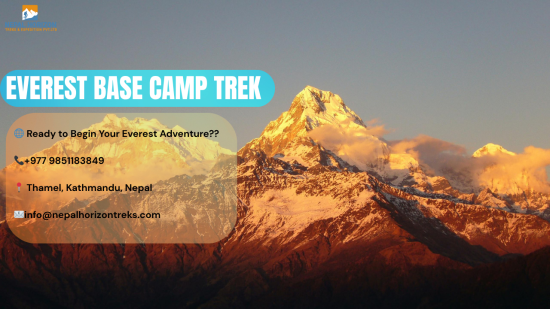
28th October 2025
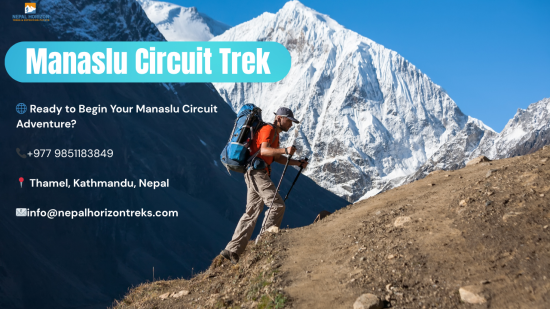
25th October 2025
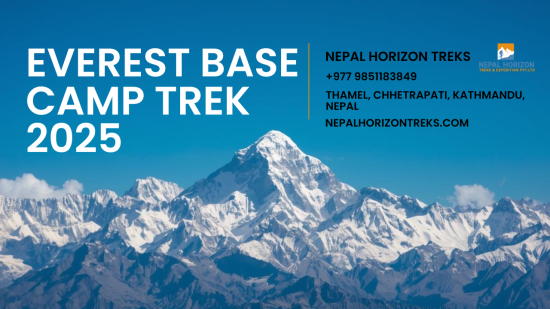
24th October 2025
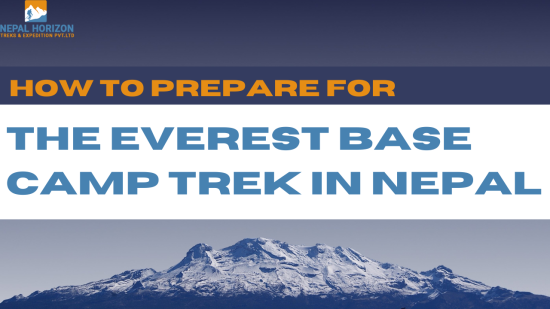
18th October 2025
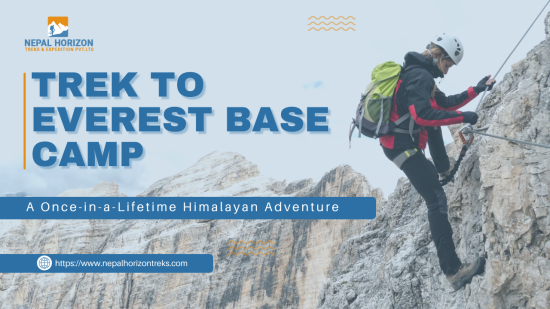
14th October 2025
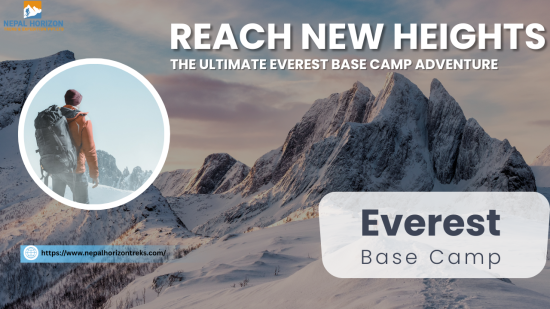
12th October 2025
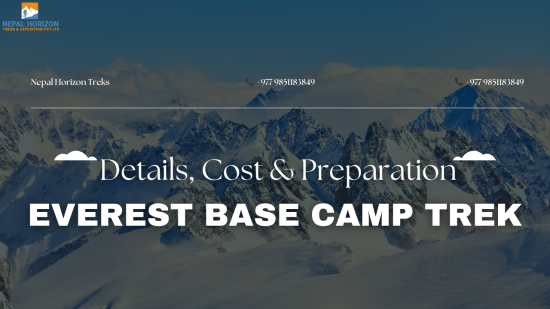
10th October 2025

7th October 2025


